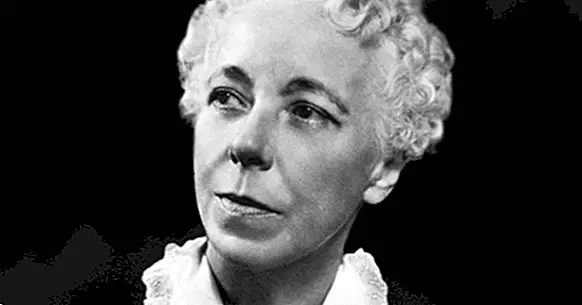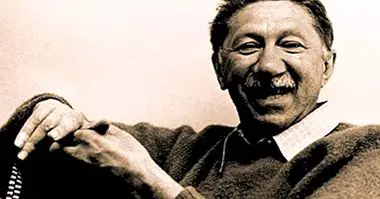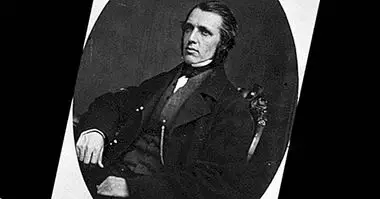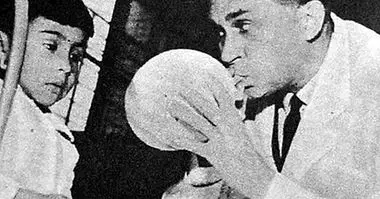Karen Horney and her theory about neurotic personality
The psychiatrist Karen Horney was one of the main representatives of neofreudismo, a movement that challenged the conventions of traditional psychoanalysis and allowed this theoretical orientation to be extended, especially in the field of neurosis.
Horney was also the first female psychiatrist to publish essays on female mental health and to question biological approaches to the gender differences of her predecessors, which is why it is considered the founder of feminist psychology .
- Related article: "History of Psychology: authors and main theories"
Biography of Karen Horney
Karen Danielsen was born in Germany in 1885 . He studied medicine at the universities of Freiburg, Göttingen and Berlin, who accepted women very recently, and graduated in 1913. During his studies he met Oskar Horney, whose name he adopted after marrying him in 1909 and with whom he had three daughters before they divorced.
A few years after Horney graduated his parents died and he entered a state of prolonged depression. It was then that he began to train as a psychoanalyst at the same time he underwent therapy with Karl Abraham, a pioneer of psychoanalysis whom Freud said was his best student.
Abraham attributed Horney's symptoms to the repression of incestuous desires towards his father; Horney rejected his hypothesis and abandoned the therapy. Later it would become one of the main critics of the mainstream of psychoanalysis and its emphasis on male sexuality.
In 1915 was appointed secretary of the German Psychoanalytic Association , founded by Abraham himself, which laid the foundations of the teaching of psychoanalysis that would take place during the following decades.
Horney moved to the United States with his daughters in 1932 because of the rise of Nazism and the rejection he suffered from Freud and his followers. There he started a relationship and He worked with other prominent psychoanalysts such as Erich Fromm and Harry Stack Sullivan. He devoted himself to therapy, training and developing his theory until 1952, the year of his death.
- Related article: "Erich Fromm: biography of the father of humanistic psychoanalysis"
Neofreudism and feminist psychology
It is considered that Horney and Alfred Adler are the founders of neofreudismo , a stream of psychoanalysis that emerged as a reaction to some of Freud's postulates and facilitated the development of alternative developments.
In particular, Horney rejected the emphasis of early psychoanalysis on sexuality and aggressiveness as determining factors in the development of the personality and the neuroses. This author found the obsession of Freud and other male psychiatrists for the penis particularly absurd.
Horney considered that "penis envy" was explained by social inequality between genders; what women envied in men was not their sexual organ, but their social role, and the same could happen in the opposite direction. In addition, he considered that these roles were determined to a large extent by culture, and not only by biological differences.
Between 1922 and 1937, Horney made several theoretical contributions on female psychology, becoming the first feminist psychiatrist . Among the topics on which he wrote include the overvaluation of the male figure, the difficulties of motherhood and the inherent contradictions of monogamy.
Neurosis, real self and self-realization
According to Horney, neurosis is an alteration in the relationship of a person with herself and with others. The key factor in the appearance of the symptoms is the way parents handle anxiety of the son during his development.
The neurotic personality or characteristic neurosis arises when the parents do not provide their children with an affectionate and safe environment, generating feelings of isolation, helplessness and hostility. This blocks the normal development and prevents the person from becoming their "real self" .
In Horney's work, the real self (or self) is equivalent to identity. If an individual's personal growth is healthy, their behaviors and relationships develop properly, leading to self-realization. For Horney this is a natural human tendency; later humanists like Rogers and Maslow would hold the same belief.
By cons, the identity of neurotic people is divided between the real self and the ideal self. Since the goals of the ideal self are not realistic, the person identifies with a depreciated image of herself, which leads her to distance herself even further from the real self. Thus, neurotics alternate between perfectionism and self-deprecation.
- Maybe you're interested: "Neurosis (neuroticism): causes, symptoms and characteristics"
Neurotic personality types
Horney's theory of neurosis describes three types of neurotic personality, or neurotic tendencies. These are divided according to the means used by the person to seek safety, and are consolidated by the reinforcements obtained from their environment during childhood.
1. Complacent or submissive
Characteristic neurosis of complacent type is characterized by search for the approval and affection of others . It appears as a consequence of continuous feelings of helplessness, neglect and abandonment in early development.
In these cases the self is annulled as a source of security and reinforcement, and the internal conflict is replaced by the external one. Thus, submissive neurotic people often believe that their problems could be solved by a new partner, for example.
2. Aggressive or expansive
In this case Hostility in the relationship with parents predominates . According to Horney, expansive neurotics express their sense of identity by dominating and exploiting others. They tend to be selfish, distant and ambitious people who seek to be known, admired and, at times, feared by their environment or by society in general.
3. Isolated and resigned
When neither submission nor aggressiveness allow the child to capture the attention of their parents, it can develop a characteristic neurosis of isolated type. In these people appear needs of perfectionism, independence and loneliness exaggerated that lead to a detached and shallow life.



















